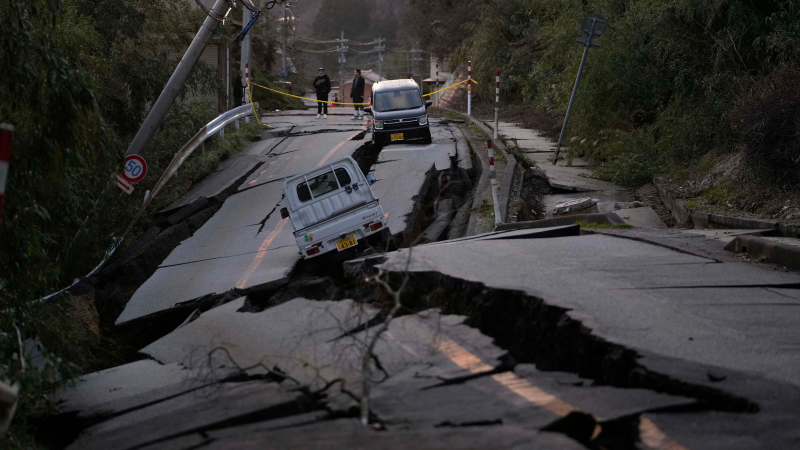How common are earthquakes on the East Coast? Small explosions reported after NYC quake
An unusual earthquake shook the New York City borough of Queens early Tuesday in more ways than one, with residents startled by a series of small explosions that may have been caused by the quake.
The 1.7-magnitude quake registered near the Astoria neighborhood at about 5:45 a.m., according to the U.S. Geological Survey.
Around the same time, people in Manhattan and Queens reported hearing what sounded like several explosions coming from Roosevelt Island, a 2-mile-long island between the two boroughs.
Earthquake may have caused Roosevelt Island explosions
The cause of the explosions was under speculation earlier Tuesday morning, but officials later said the earthquake may have been to blame.
Allan Drury, a spokesperson for Consolidated Edison, told the Associated Press that officials at the utility suspect that the quake caused the explosions, since they happened around the same time.
Drury said there were no power outages.
There were no reports of injury, damage or disruptions to transportation or other services, the city's emergency management agency said. The New York City Department of Buildings said no structural issues were found on Roosevelt Island.
Another earthquake hits Maryland
Hours before the New York City quake, a 2.3-magnitude earthquake just west of Rockville, Maryland, was felt for miles in the Washington, D.C., suburbs.
That quake hit at about 12:51 a.m., according to USGS. Officials said they got reports from people who felt the trembling in Maryland, Virginia, West Virginia, D.C., and Pennsylvania.
"People felt it and heard it," said Pete Piringer, spokesperson for the Montgomery County Fire and Rescue Service, in a video posted to social media.
Piringer said firefighters felt the earthquake and reported it to last between 10 and 15 seconds. The epicenter was near a country club. There were no reports of injury or damage, he said.
Are East Coast earthquakes rare?
Earthquakes are less frequent in the eastern part of the country than in the west, but they have occurred in every state east of the Mississippi River, according to the USGS, including those large enough to cause damage in nearly all eastern states.
Some 900,000 earthquakes happen worldwide every year, but the majority happen along plate boundaries, not in the eastern and midwestern U.S., according to Michigan Technological University's Department of Geological and Mining Engineering and Sciences.
In November 1775, a 6.0 quake 50 miles outside of Boston caused serious damage in the city. An 1886 earthquake in Charleston, South Carolina, that was between 6.8 and 7.2 in magnitude damaged or destroyed much of the city.
According to the USGS, earthquakes in the East can be more concerning because they can affect a larger area than earthquakes of the same magnitudes in the West.
That's because rocks in the eastern part of the country are much older, in some cases by millions of years. Older rocks have been exposed to more extreme temperatures and pressure, and faults have had more time to heal, making them harder and denser, so seismic waves travel across them more efficiently. In the West, faults are newer and absorb more of the seismic wave energy is absorbed and doesn't spread as far.
More recently, a 2011 earthquake that originated in Virginia and clocked in at a magnitude of 5.8 broke records for how far out it was felt. It triggered landslides 150 miles away and sent damaging tremors four times farther and over an area 20 times larger than ever recorded before, the USGS said the next year.
Contributing: The Associated Press

Disclaimer: The copyright of this article belongs to the original author. Reposting this article is solely for the purpose of information dissemination and does not constitute any investment advice. If there is any infringement, please contact us immediately. We will make corrections or deletions as necessary. Thank you.





